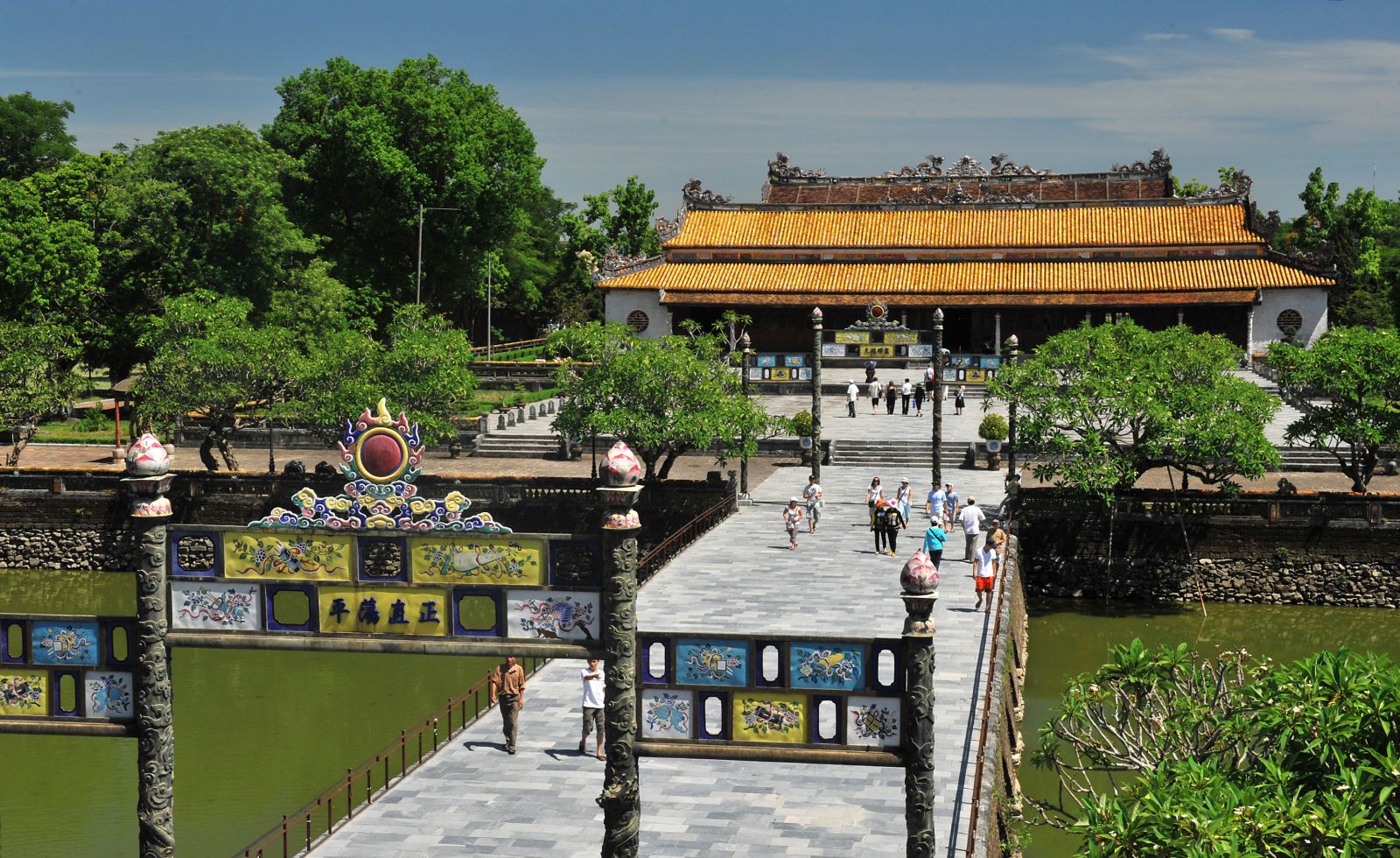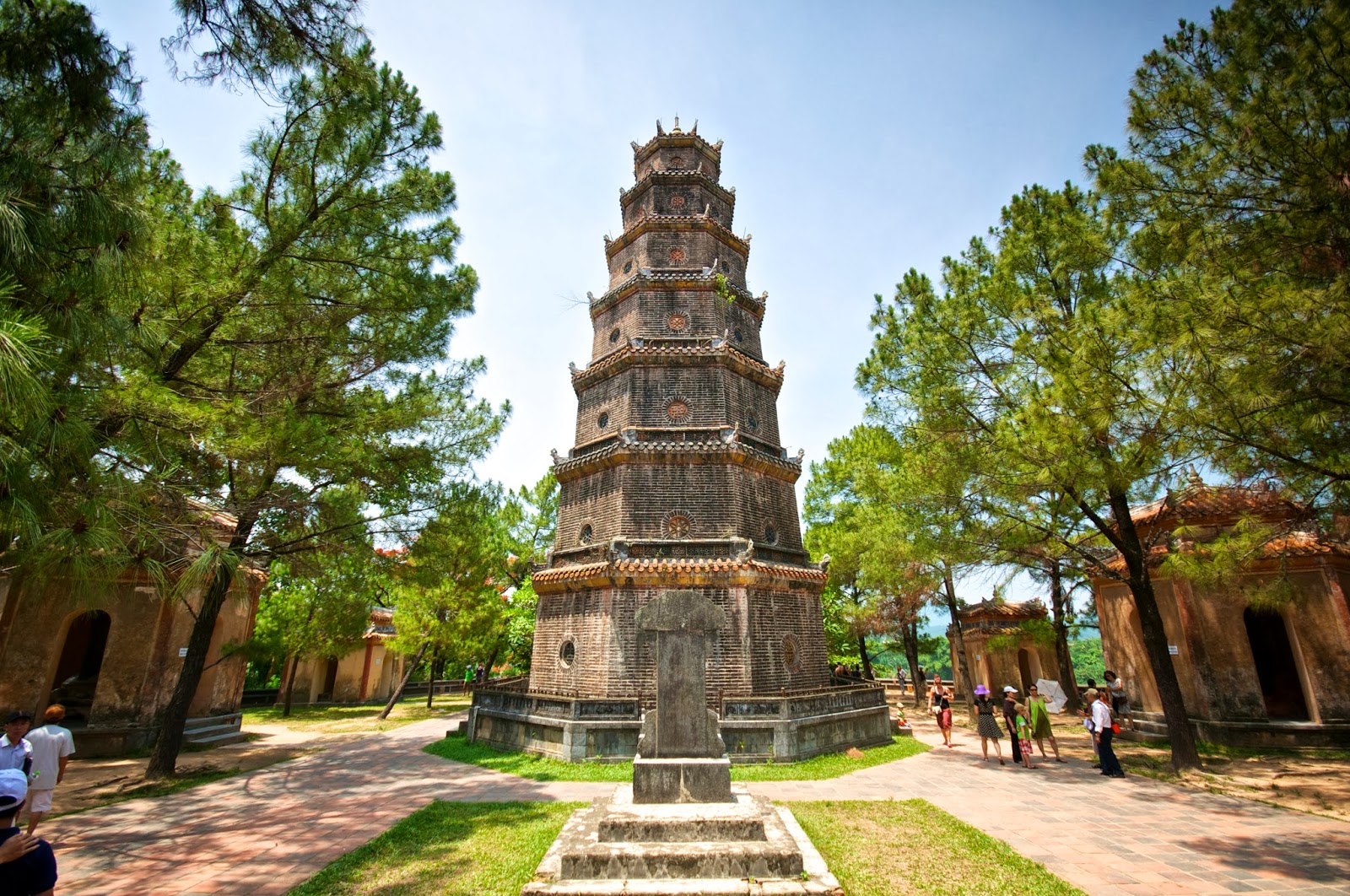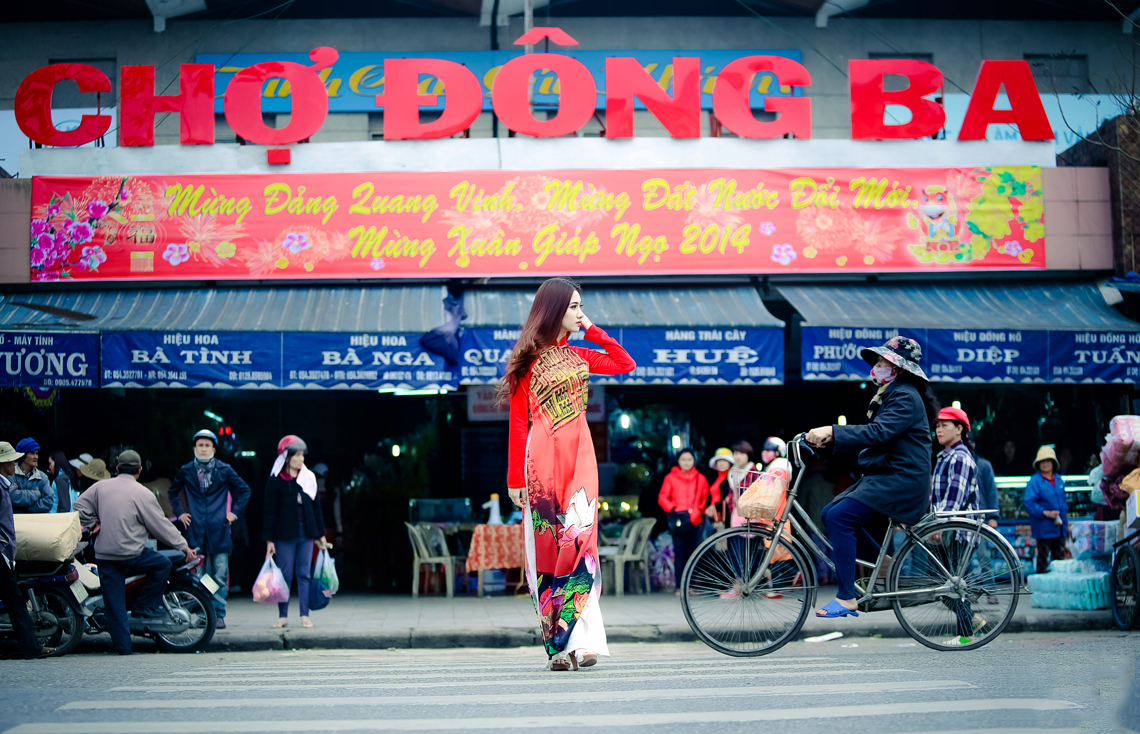Destination
The ancient Imperial City of Vietnam embraces the elegant and peaceful beauty within. Ariving at Hue, you can feel the breeze from the very old days in humans, in customs, lifestyle and architecture which are still well-maintained until nowadays. Being the capital of Viet Nam from 17th century to first half of 18th century, Hue is the historical witness of many ups and downs during the Nguyen Dynasty – the last feudal dynasty in the history of Viet Nam. Hue finished its mission of being Viet Nam’s capital in 1945 when Bao Dai – the last King of Nguyen Dynasty abdicated. Through Viet Nam Wars against French Colonial and America Invasion, what has been left uptil now of Hue the Imeprial Citadel still makes Vietnamese people proud of a well-built historical former capital with beautiful culture
Places to visit
Imperial Citadel
With the Purple Forbidden City within, the Imeprial City of Hue began to be built from 18094 and completed in 1833 – year of King Minh Mang. If the Imperial City itself is the place where the Emperor and the court process ceremonies and festivals including ceremony of the troops in Ngo Mon Gate and the Grand Meeting between the Emperor and the court twice a month in Thai Hoa Palace; the Purple Forbidden City is the living place for the King, the Queen and the whole imperial family. Surrounded by a moat, the Imperial Citadel faces the romantic Perfume River. Suffering from many damages time to time, the Imperial Ciatel of Hue is still embracing the charm of its golden age uptil now.
.jpg)
Royal tombs
Nguyen Dynasty’s royals tombs are the huge artifacts for the very last feudal dynasty of Viet Nam. Constructed on a vash dimension in many years with different styles for architecture designs which represented the Emperor and the time when they were in reign, all of the royal tombs have their own histories and stories during the process of construction. Most visited royal tombs are Tu Duc Tomb, Khai Dinh Tomb, Minh Mang Tomb, Gia Long Tomb and Dong Khanh Tomb.

Thien Mu Pagoda
Built up on a high hill on the northern bank of Perfume River, Thien Mu Pagoda is not only a Buddhist temple but also a very romantic and beautiful spot for your sightseeing. Also known as Linh Mu Pagoda, the place has a legend about a lady from heaven, which is also the origin of the name Thien Mu (Linh Mu). Coming to this sacred sightseeing, visitors can enjoy both the scenery landscape and the typical traditional architecture of Hue pagodas. Thanks to its high position upward a charming curve of Perfume River, the pagoda offers a mind-boggling view of both the flow and the surrounding areas. Covered with pine trees, bonsai and delicate manmade pond, this religious site brings about a peaceful feeling which is hard to find anywhere else. The architecture, location and history makes Thien Mu pagoda among the top attractions to see in Hue.

Dong Ba Market
Dong Ba Market is the biggest commercial center of Thue Thien – Hue province and surrounding areas. Formerly known as Qui Gia Thi Market, Dong Ba Market which was rebuilt up on the same floor in 1887 by King Dong Khanh has functioned as the main resource of food for the palaces, hospitals, army camps and dormitories of the national universities such as Quoc Hoc, Dong Khanh, Binh Linh, Thien Huu, etc. In 1899, during the Western-style reconstruction project of King Thanh Thai, the market was moved to the nowadays position. Even though Dong Ba Market has undergone several projects since the beginning of the 20th century, nowadays, it still embraces many old features. The first thing you can feel when arriving this place is the atmosphere and the daily pace of the market itself. Almost every traditional cultural hand made gifts and souvenirs can be found in Dong Ba Market: non la (Vietnamese conical hat), me xung (candies from sugar and sesame), mam tom chua (Hue sour shrimp sauce), lotus seed etc. Local delicacies also can be found in the “food court” of street vendors on the ground of the market. There you can have a delicious taste of com hen (mussel rice), bun bo (beef noddle), banh beo – banh bot loc – banh khoai (various cakes made from rice powder) etc. Apart from providing food and other goods for the cities, Dong Ba market is also a must-stop of visitors to discover typical trading methods (by bargaining) as well as buying some specialities of the local people.




.png)
.png)
.png)
.png)
.png)
